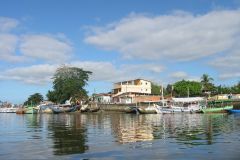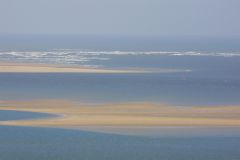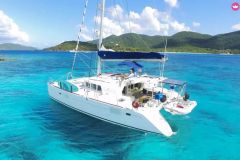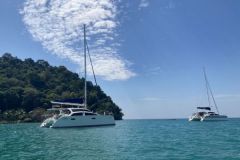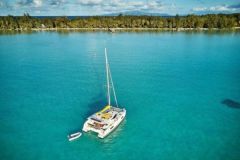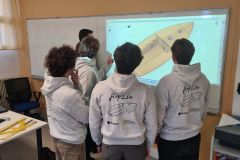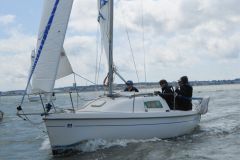On the Basin, sailors are almost unanimous: a keelboat doesn't have much to do in the shallow channels and refrains from most of the coolest spots. There is no question of failing unless heavy and cumbersome crutches are put in place. And mandatory dinghy... The solution to take full advantage of the Basin: an integral dinghy!
A neat construction
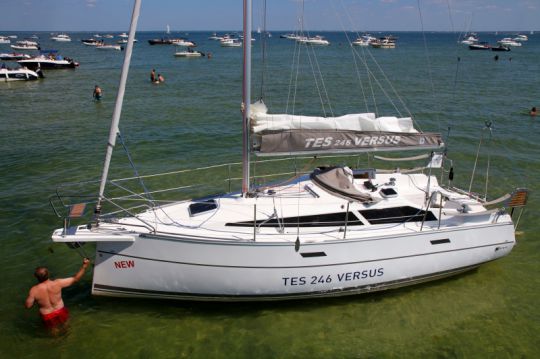
On the construction side, we are dealing with a good quality polyester, with NGA isophthalic anti-osmosis resin. This resin is applied on contact. The coloured strips are dyed in the mass. The Polish yard opted for a deck counter mould - insulation and limitation of condensation phenomena, but not for the hull in order to maintain access to the bottom. The ballast (500 kg) consists of cast iron balls embedded in resin. The drift, with its 100 kg, participates in the stiffness to the canvas.
An inboard engine under the helm
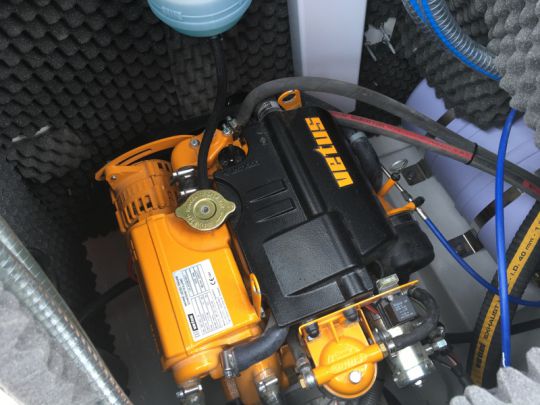
Under the helm, a large box houses the inboard engine. The access to the mechanics is easy, it makes more noise in the cockpit... but less inside. On the other hand, for weight centering, it is not terrible. All the more so as the bow is also well loaded - dolphin boat, mast system, anchor and forceps deported. The balconies, like the imposing rear arch, will be reworked to be more discreet. Note: the yard also offers an outboard motor, in a chair or in a well.
The bow on the beach
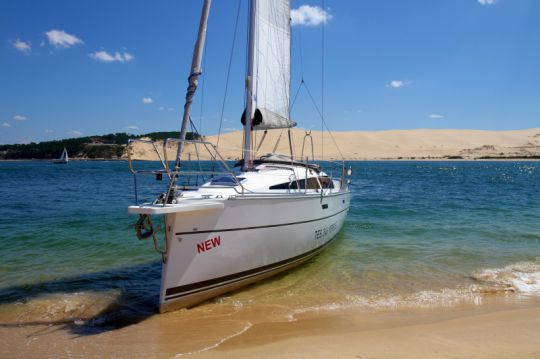
Let's return to the Basin: for visitors, it is interesting to base ourselves at the port of Arcachon - the third in France, with more than 2,000 berths - since we are free from the tides. With the exception of the private port of La Vigne, on the Cap Ferret peninsula, all the other ports of the Basin fail at least half-time. Moorings remain possible, but are more and more regulated - ban for example to stay for the night in the bench of Arguin since this year... This is precisely our first objective. To reach this sandy island, we cut through the banks. The TES drift will pick itself up if there is not enough bottom left. The same goes for the pivoting rudder; it is equipped with a cleat that tilts under load. On the other hand, when the imposing shovel is raised, the bar becomes very hard and one is forced to press with the foot on the shovel to put it back in vertical position. But our five-legged sheep can land on dry land!
Good surprise under sail

The dunnage and the important displacement, associated with the drag of the fixed propeller of the diesel engine made us fear to be bored a bit under sails ; we have to admit that the long waterline length of the 246 - the inverted bow has a lot to do with it - combined with a slender sail plan and a mainsail with horn translate into very correct performance, a close-hauled course close to 45° of the actual wind and beautiful accelerations under spinnaker - we have a spinnaker mounted on a furler that works perfectly.
Drawing edges at the foot of the dune..
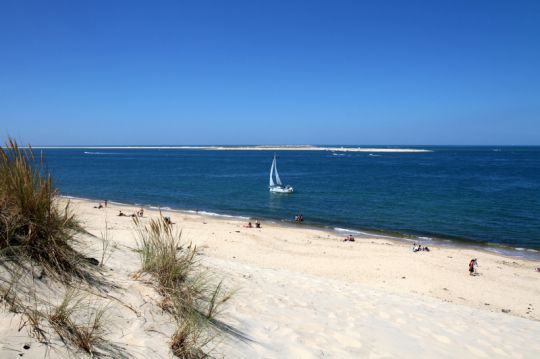
East of the bench of Arguin, the imposing dune of Pilat: it lost 4 or 5 meters of height last winter but frankly, it does not show. This imposing mountain of sand remains a piece of Sahara stranded between pines and ocean. The TES slips between the swimmers to taste the turquoise water.
A functional deck layout
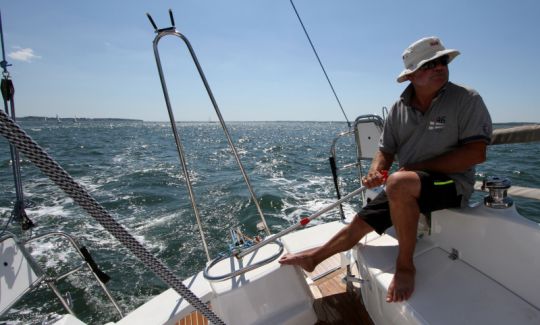
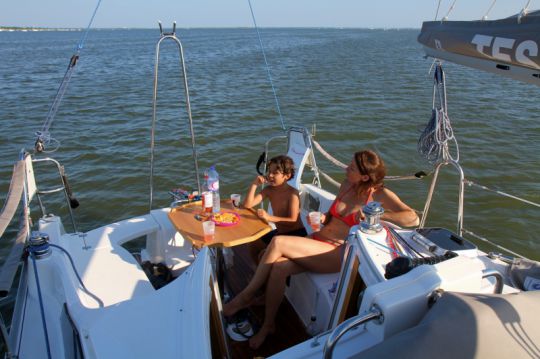
The cockpit is shaped like a lyre in order to facilitate rearward movement. Everything has been done to facilitate boarding and swimming on the transom, with two folding benches and, above all, folding bathing platforms. An optional table is available. The coamings are rather thin, but effectively protect the cockpit.
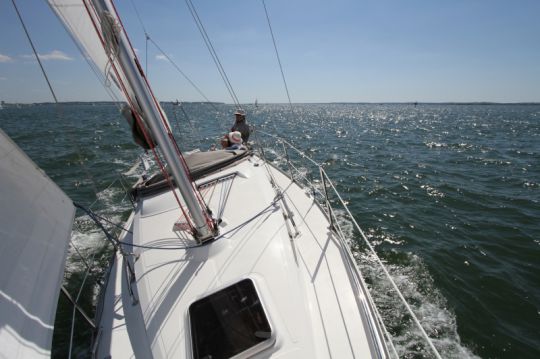
The descent axis is off-centre to starboard in order to concentrate the manoeuvres - 9 blockers - on a single winch to port. The footbridges do not exceed 20 cm in places but the circulation remains easy. Handrails will soon be fitted to the deckhouse and soft top.
Conche du Mimbeau, reserved for small draughts
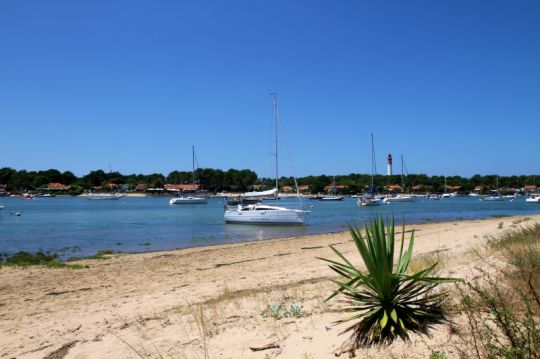
Two hours from the open sea, even with a small tidal coefficient, the TES can venture into a small haven of peace at the foot of the Cap Ferret lighthouse. At reduced speed, drift and rudder raised, the 246 remains manoeuvring in less than 50 cm of water. Typical oyster farming areas, wild yuccas... here is an excellent shelter where unfortunately you can no longer sleep on board in July and August.
Heading for the legendary tchanquées huts
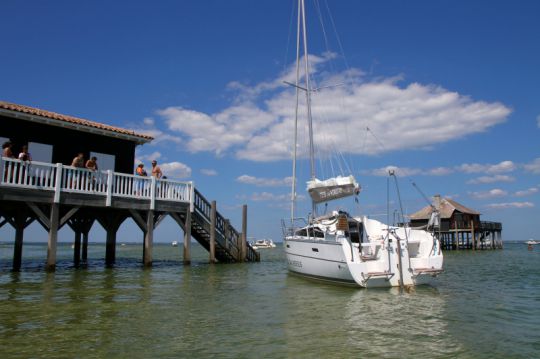
We console each other by hitting, a few miles to the north, the channels lined with pine nuts that lead to Bird Island. Many boaters here: the safest way to discover the two emblematic huts on stilts is to pull the TES by the bow, with water at the knees.
Secret port of Biganos
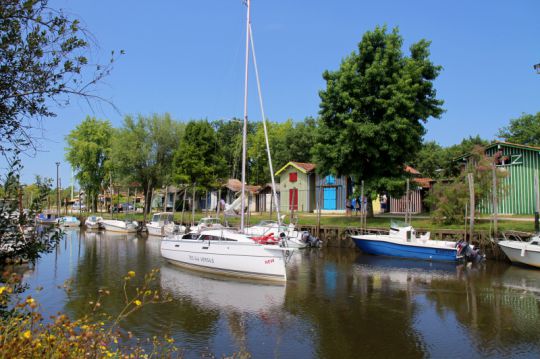
The next day, we decide to return to go up Eyre, small river which leads to the port of Biganos. A maze of channels imposes to have the nose on the map and the binoculars within reach. The low tide coefficient of the day - 59 - limits the water height at high tide. There, the sail drive ploughs the bottom of the channel, which forces us to wait again and to enjoy only the two hours when the sea level is maximum. Access to this small port full of multicoloured huts is now easier since an overhead cable has been dismantled.
Stranding test
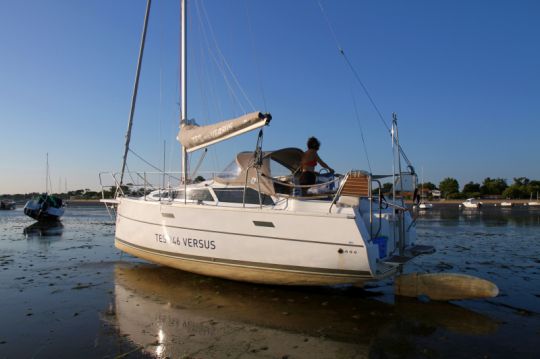
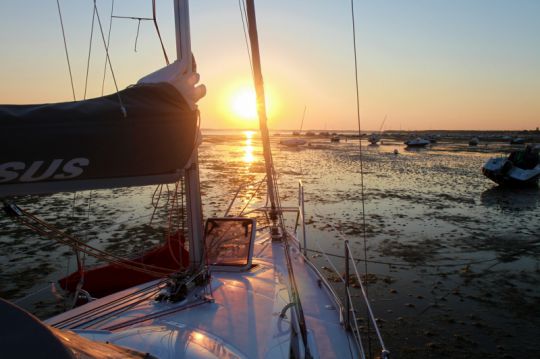
Land on the beach, the TES can do... and run aground? We decided to put the boat down, just to make sure. The large areas of sand and mud at the bottom of the basin, as in Andernos, are perfect for this. Verdict at the end of the water games and evening dives: the TES runs aground perfectly flat and remains stable whatever the movements of the crew on deck. And the propeller has the good taste to sink discreetly into the sand, without making the base suffer. However, stranding on very hard ground - a hold for example - is to be avoided.
Comfortable accommodation
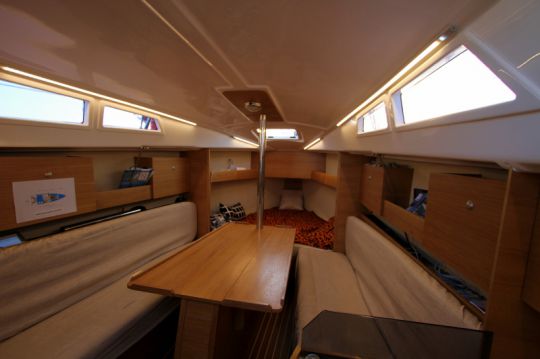
Our nights on board allowed us to enjoy the comfort offered by the TES - starting with a good hot shower, the possibility to recharge phones and other electrical appliances and even to connect them to 220V thanks to a converter. We live on board like at home! The access may surprise, with this off-centre hood, but the steps are well in line with the boat.
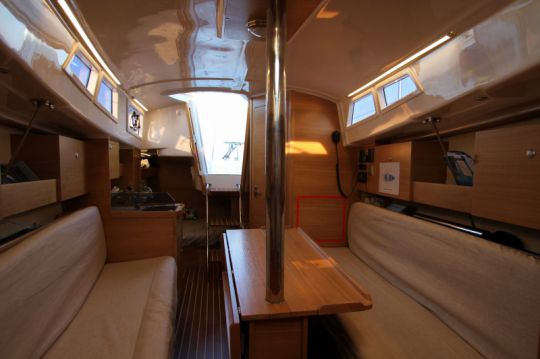
First observation: there is volume, a lot, and natural light is present. A galley and a double berth under the cockpit can be seen on the starboard side. Across the street is the bathroom. The square is logically articulated around the drift well, invisible under the table. The height under the bars is still important: 1.80 to 1.82 upright from the table.
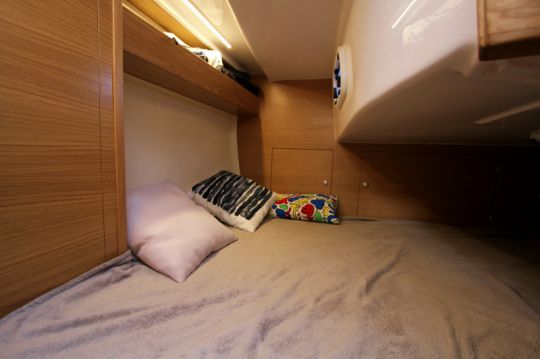
At the front, another double berth. Storage space is sufficient for four people to envisage a one-week cruise. The work of the joineries and the finishing in general are satisfactory.
A positive assessment
Transportable, easy to rig and comfortable enough to live on board, the TES 246 Versus will convince those who do not necessarily wish to sail every year on the same water - and/or yachtsmen who do not have a berth.





